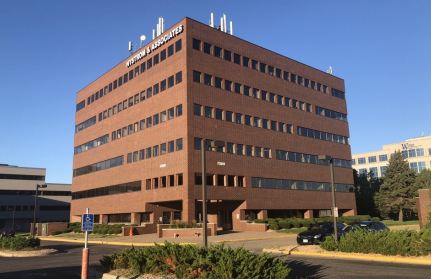技术
- 应用基础设施与中间件 - 数据交换与集成
- 基础设施即服务 (IaaS) - 云数据库
适用行业
- 水泥
- 电子商务
适用功能
- 物流运输
用例
- 施工管理
- 基础设施检查
服务
- 云规划/设计/实施服务
- 系统集成
关于客户
PostNL 是一家领先的邮件、包裹和电子商务服务提供商,业务遍及荷兰、英国、德国和意大利。该公司拥有 10,000 多名员工,使用 Oracle 和 SQL Server 作为主要数据源。 PostNL 是云技术的早期采用者,利用 Fivetran 的云功能将其应用程序迁移到云端,并持续集成这些云系统。在进行云迁移之前,PostNL 已使用 Fivetran 15 年来支持由 250 多个数据库组成的大型分布式跟踪应用程序。该公司将 Fivetran 的使用扩展到整个企业的各种数据集成用例,使其有信心推进云迁移。
挑战
PostNL 是一家位于荷兰、英国、德国和意大利的邮件、包裹和电子商务服务提供商,决定将其 IT 运营迁移到云端,以保持竞争优势并降低成本。该公司的目标是停用其本地数据中心,并将其应用程序、基础设施和 IT 管理转移到云端。这些应用程序在 Oracle 和 SQL Server 上运行,在可能的情况下,PostNL 希望用软件即服务 (SaaS) 替换现有的定制软件。如果没有合适的 SaaS 替代品,该公司计划在基于云的基础设施和平台服务(IAAS 和 PAAS)之上实施遗留软件和定制软件。 PostNL 最初选择 Microsoft Azure 平台来提供这些服务,后来添加了 Amazon Web Services,以避免将其整个基础设施运行在单一供应商的解决方案上的风险。迁移过程历时两年多,带来了重大的集成挑战。 PostNL 需要将应用程序和数据迁移到云端,确保迁移的应用程序继续与现有的本地系统通信,并集成各种云环境。
解决方案
PostNL 利用 Fivetran 的云功能来简化其迁移过程。与许多依赖于应用程序位置的迁移/集成解决方案不同,Fivetran 使 PostNL 能够实施“直接迁移”方法。通过在每个数据平台上安装 Fivetran,PostNL 可以将每个数据库移动到云端,然后重新定义其在 Fivetran 中的位置,而无需更改应用程序。这种方法允许将应用程序轻松、增量地迁移到云,同时保持现有的集成。无论是将应用程序迁移到 Azure 云还是从其他云平台(例如 Amazon 的 EC2)添加服务,都使用相同的方法。一旦应用程序进入云端,PostNL 就需要跨云平台进行集成。为了应对这一挑战,PostNL 部署了基于云的 Fivetran 集成服务。该服务于 2014 年采用,作为 PostNL 的云集成中心运行,连接其所有基于云的解决方案。
运营影响
数量效益

Case Study missing?
Start adding your own!
Register with your work email and create a new case study profile for your business.
相关案例.

Case Study
System 800xA at Indian Cement Plants
Chettinad Cement recognized that further efficiencies could be achieved in its cement manufacturing process. It looked to investing in comprehensive operational and control technologies to manage and derive productivity and energy efficiency gains from the assets on Line 2, their second plant in India.

Case Study
Digital Transformation of Atlanta Grout & Tile: An IoT Case Study
Atlanta Grout & Tile, a Tile, Stone & Grout restoration company based in Woodstock, Georgia, was facing challenges with its traditional business model. Despite steady growth over the years, the company was falling behind the web revolution and missing out on the opportunity to tap into a new consumer base. They were using independent software from different vendors for each of their department information and workforce management. This resulted in a lot of manual work on excel and the need to export/import data between different systems. This not only increased overhead costs but also slowed down their response to clients. The company also had to prepare numerous reports manually and lacked access to customer trends for effective business decision-making.

Case Study
Revolutionizing Construction Equipment Rental: A Case Study on ProsRent and ENO8
ProsRent, a startup that won the 'Best Financial Opportunity' and 'Best Pitch' at CodeLaunch 2016, aimed to revolutionize the way construction professionals source and rent heavy equipment. In the construction industry, project managers and contractors typically rent heavy equipment from supply companies. However, predicting inventory can be challenging, and finding the required equipment at the right time and place can be a hassle. If the preferred vendor doesn't have the required equipment, it results in wasted time and money in searching for it, often leading to higher costs due to non-preferred rates and increased delivery costs if the vendor is located far from the job site. Suppliers, on the other hand, desired access to a wider base of trusted renters that they didn't have to vet themselves and wanted to offer dynamic rental pricing based on demand and availability in their market. ProsRent's challenge was to produce a minimum viable product that was fast and first to market but also strong enough to engender loyalty and repeat business from the target market.

Case Study
IoT Solution Enhances Comfort and Energy Efficiency at Apple Valley Commons Office
Apple Valley Commons, a mixed-use office complex built in 1986, was facing significant comfort and energy efficiency challenges. The building, which houses a variety of businesses, was experiencing extreme temperature imbalances, causing discomfort to employees and clients. Despite outdoor temperatures being consistently high during summers, occupants had to use space heaters to keep warm. The electricity bills from the constant operation of the heat pump were exorbitant. The building's elevator room on the roof was also overheating, reaching temperatures of 130 to 140 degrees, causing the elevator equipment to shut down. The building's existing controls solution did not provide a front end for diagnostics or remote control. The building management was seeking a solution that could address these temperature issues, improve occupant comfort, reduce operational costs, and increase building visibility.

Case Study
Revamping EE's Legacy ERP: A Case Study on BT's Strategic Transformation
EE, even after its merger with BT, was operating its ERP estate on legacy infrastructure, hosted on the premises of a third-party supplier. This outdated system resulted in a volume-based operational model, higher time to market, longer delivery cycles, and unsatisfactory customer experience. BT recognized the need for a strategic transformation of these aging ERP systems and sought a partner who could proactively manage application services. The partner was also expected to handle development requirements associated with application management services, drive accountability, and ownership with a time and target-driven transformation of these services. BT's primary goals were to improve customer experience, reduce cycle time, and measure these improvements with precision.




